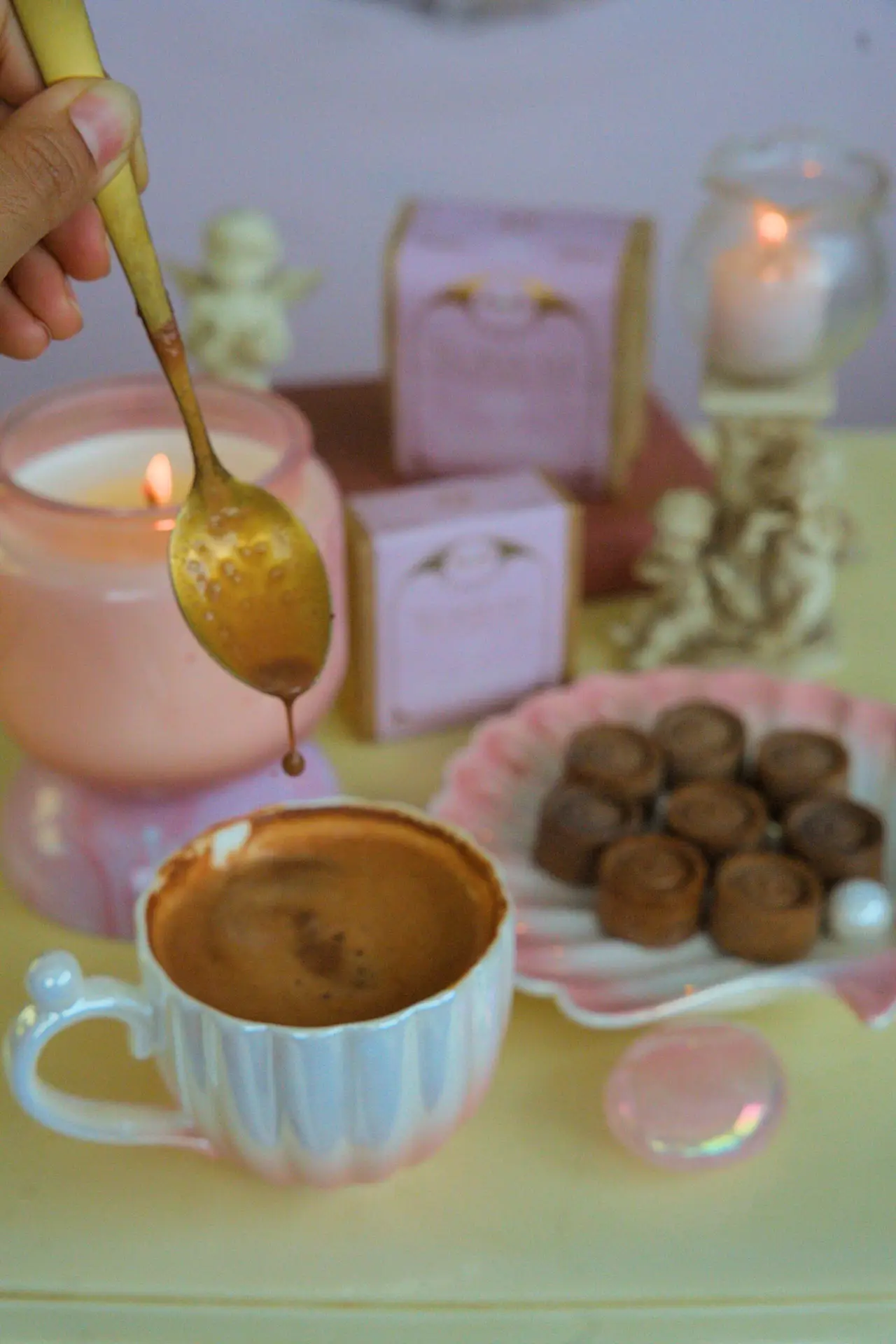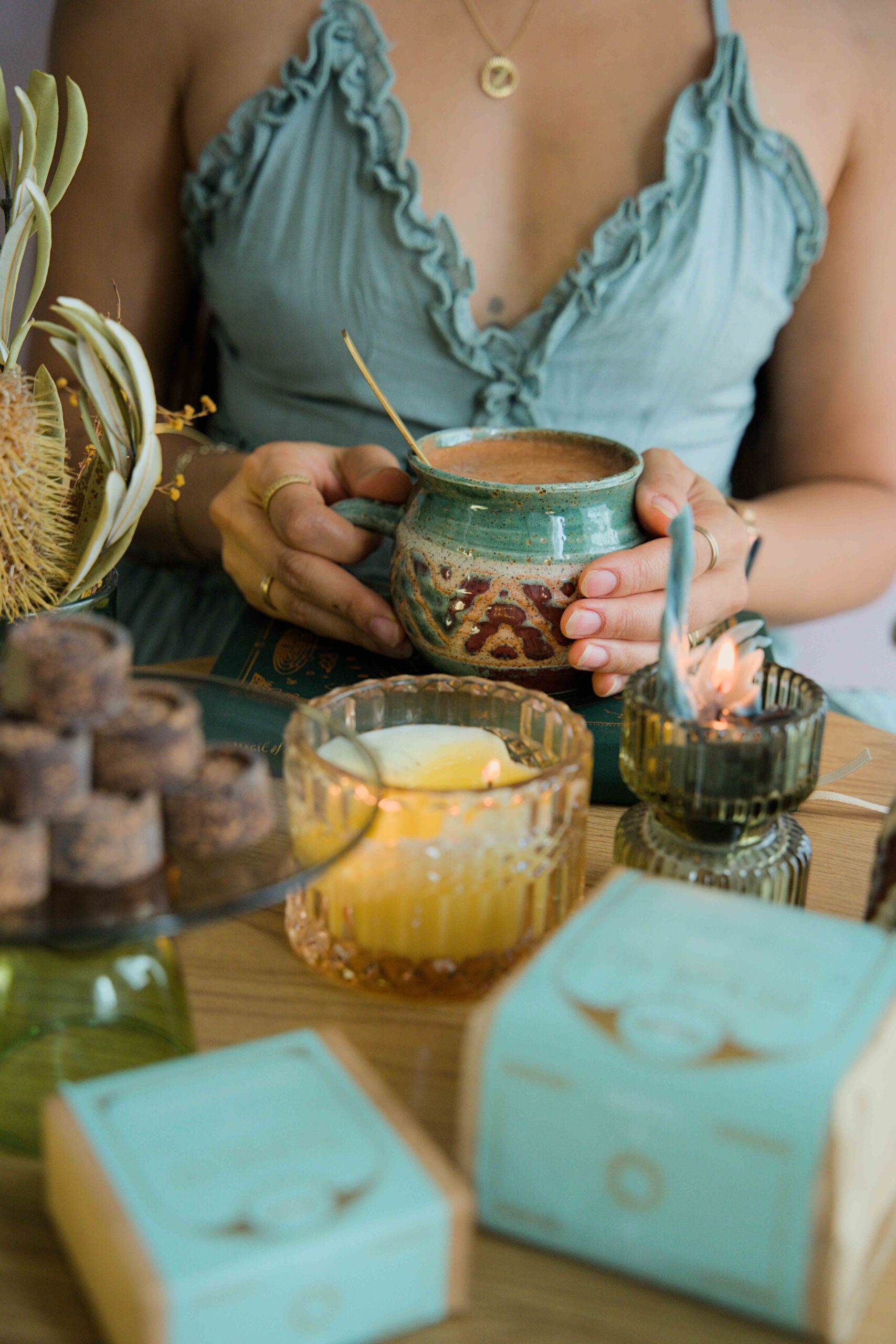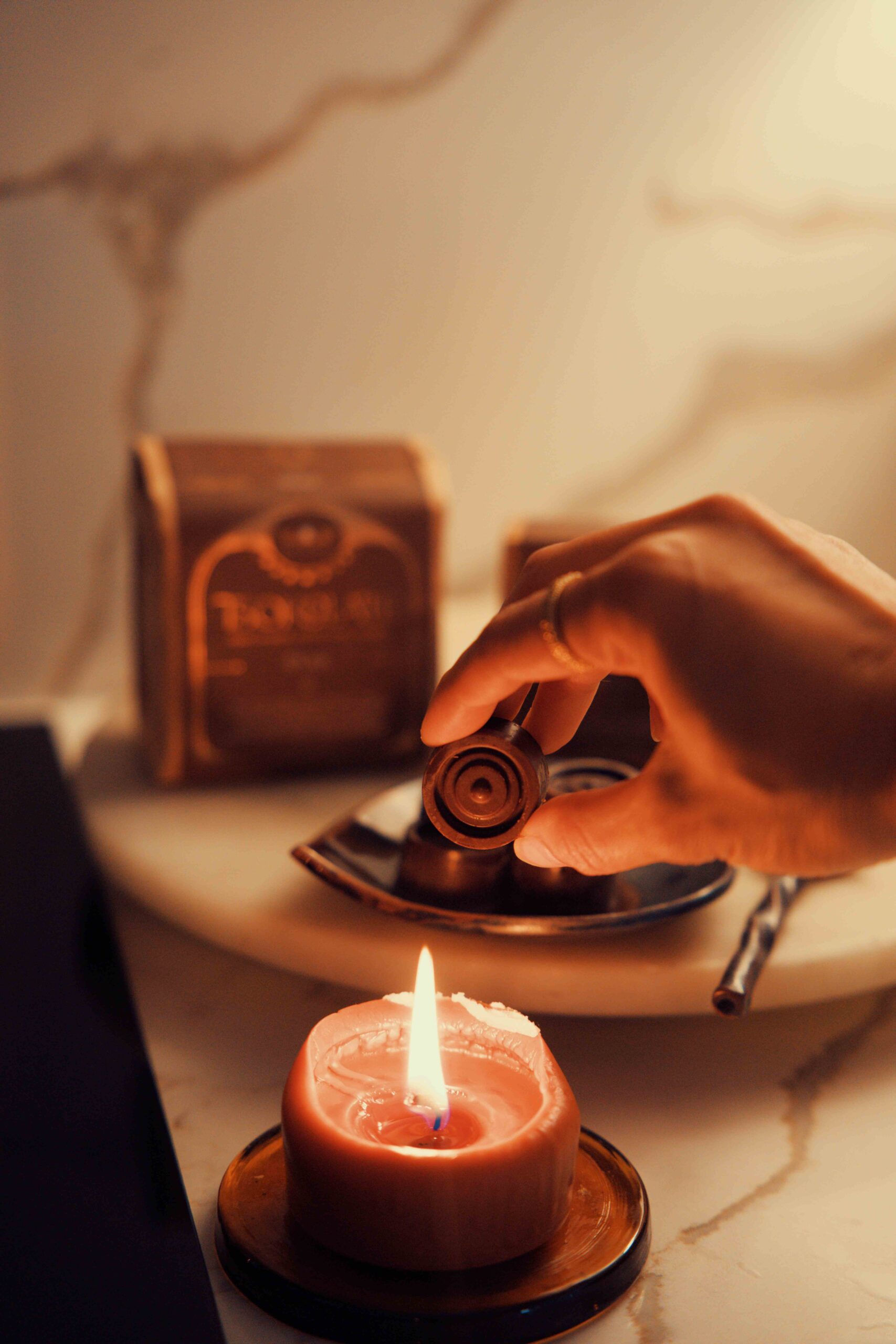It’s important for us to acknowledge that what we understand about the origins of cacao and its use are limited to the information available to us today. Such information can often be altered or coloured depending on the source. That being said, there are traditional wisdom keepers who continue to sit with and share cacao to this day. It is with utmost respect and reverence to them and the spirit of cacao, that we are able to enjoy and share this beautiful plant medicine.
In the Mayan tradition for example, sacred ceremonies are led by an initiated Aj’qil or Mayan guide who has devoted their life to this path. These rituals can only be carried out by an initiate of this lineage. Therefore, it is vital that when we are drinking and sharing cacao, we remember to be clear in our language, intention and actions. We make sure that we honour and show gratitude for the cacao spirit and it’s traditional custodians at the forefront of all our gatherings and acknowledge that we are not undertaking a traditional ancestral practice.
History Of Cacao Ceremonies
Before its widespread use as an ingredient for making the chocolate that we all know and love today, Cacao was considered a sacred plant by ancient Mesoamerican civilisations. It featured as a central element in religious and spiritual rituals of the Nauha, Mayan, Olmec & Inca civilisations. It has been said that in these ceremonies, a pure form of cacao was made by grinding the cacao beans into a paste and then mixing with hot water to create a beverage. This ceremonial drink could then be spiced with herbs that naturally grow alongside the cacao beans such as cinnamon and panella. Some research suggests that not everyone was allowed to drink the sacred beverage and that rather, it was used only by Priests and the noble cast during special occasions such as weddings and religious ceremonies.
Our Own Cacao Roots
Our roots with cacao started during childhood, growing up in the Philippines. Lola (grandmother) used to make tsokolate to go with our breakfast or mirienda (afternoon snack). From those early memories, a warm cup of cacao wasn’t just delicious but it was also a beloved ritual. A daily practice that nourished the body mind and spirit, one that many filipinos can relate to.
No one is exactly sure of when cacao first arrived in the Philippines but many suggest that it came with the Spanish. At the time, cacao was only consumed in the form of a beverage just as the Aztec & other native peoples of Mexico were consuming it. So it is said that when the Spanish colonisers successfully cultivated cacao in the Philippines, that’s the only way it was being consumed: as a drink.
However, this wasn’t a drink that was available to everyone. The Spanish cacao farms were watched over by priests that determined who could consume it. As the story goes, when you visited the cacao plantations and if you were deemed worthy enough, then you were served a cup of tsokolate, the Filipino word for “chocolate.”
The thing is, there were two types of Tsokolate: Tsokolate Eh and Tsokolate Ah. Filipino Tsokolate Eh was “espresso” chocolate, meaning the most concentrated form of the beverage, reserved only for the most worthy of visitors. Meanwhile, Filipino Tsokolate Ah was chocolate “aguado,” or “watered down.” It was a lighter version of the beverage, and serving it meant that you respected the person’s position, but not that much.
For centuries this traditional Filipino hot chocolate has been and is still the most popular way to enjoy cacao throughout the Philippines, especially as it’s transformed from a coloniser’s beverage to the drink of the people.
Cacao Ceremonies Today
Cacao has been considered a sacred medicine and wise teacher for thousands of years. When enjoying and working with cacao, it is vital that we understand the difference between traditional Indigenous rituals and practices and the cacao gatherings that have become popular today.
The benefits of cacao are available to everyone. Pure cacao is high in antioxidants and minerals such as iron, magnesium, calcium and also contains a type of stimulant called Theobromine. These active ingredients assist in relaxing the nervous system, helping to create space between thought whilst enabling access to deeper layers of consciousness. Ceremonial Cacao is considered to open the heart, assist in connection to self and others, enhance creativity and deepen meditative states.
When shared with respect and acknowledgement for its traditional origins, cacao is a potent tool for growth and connection. Many people find meditation challenging and cacao can serve as a helpful and nurturing guide and tool, encouraging deeper self exploration. The cacao circles that have become popular in the wellness world today are gathered for a variety of reasons ranging from reconnecting with deep inner wisdom to being consumed as part of guided meditations, to releasing emotional blockages.
How To Have Your Own Cacao Ceremony
What your practice with cacao looks like is entirely up to you. You can meditate, journal, create art, practice breathwork or some kind of movement practice, whatever feels good and is meaningful to you. No matter how you choose to sit with and share ceremonial cacao, we offer the following simple guidelines to ensure that we all do so with respect and reverence to the spirit of cacao and it’s custodians:
Honour & Give Thanks: Take a moment to acknowledge the original keepers of this tradition both past and present. Acknowledge those who have grown the cacao with love and care. Be clear in your thoughts, words and actions that you are not partaking in a traditional indigenous ritual. Give thanks to the spirit of cacao for all her wisdom and medicine and the opportunity to sit with her. Give thanks to our ancestors, to the four elements, the four directions, the spirit of the plants and the sacred sites.
Make An Offering: Make an offering to the spirit of cacao. It can be in the form of songs, prayers, flowers, herbs, essential oils, crystals, food etc. Whatever your offering, be sure to always offer the best of what you have rather than just what you have left. This simple gesture as a powerful way to practice gratitude and give back.
Set An Intention: Set a clear intention for your practice which honours the sacred plant medicine foremost and then your journey and experience. Whatever you choose, make it one that is positive and serves the greater good. Allow this intention to guide your chosen practice.




